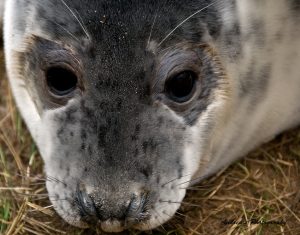The truth about the seal hunt
By Amy Van Veen (The Cascade) – Email
 As with most hunting protests, the opposition bases its claims on too little knowledge and too much Disney. Not only are harp seals not pets, but the hunters are not malicious, blood thirsty killers: they are employees doing their jobs.
As with most hunting protests, the opposition bases its claims on too little knowledge and too much Disney. Not only are harp seals not pets, but the hunters are not malicious, blood thirsty killers: they are employees doing their jobs.
The government, too, does not allow free range killing of as many seals as possible in the short March and April hunting season. There is a quota on the seals that can be hunted and, according to the Canadian Broadcasting Corporation, since 2009 that quota has been 280,000 harp seals, a mere dent in their population of almost nine million; a population which has quadrupled since the 1970s. There are times when the government allows hunters to exceed the quota set in place, but this is to allow for the loss they endured in past years when they have come short of their limit.
Protesters of the hunt have accused the federal and regional governments of giving too much economic importance to this once a year seal yield. However, these same ignorant people who are vying for the treatment of these sea animals are refusing to see the importance this hunt has for the economies of the individual employees and companies. While they harpoon the government, they are harpooning some of these east coasters who have one third of their income coming from this spring event.
The hunt is not useless. The CBC explains how the pelts are obviously the first thing people go to, accusing hunters of throwing away the rest of the seal like people used to do with elephants for their tusks. However, the meat of the seal is used for both human and animal consumption, seal oil can be used for fuel for both cooking and lamps as well as providing oils for Omega-3 rich fish oil capsules, and seals can also be used for leather.
The footage of the seals being killed is gruesome, that’s for sure, but the reason these videos are so hard to swallow is because they do not depict footage of treatment commonly bestowed on animals. Most of the public prefer sea creature videos of adorable dolphins saving humans or humans cuddling with otters, but when it gets real, people complain. It’s the same reason there are not videos taken in slaughterhouses. These kinds of thing happen, whether or not people want to see it. The average citizen is not equipped to maturely deal with the footage, but because seal hunting is done out in the open and not behind locked doors like cattle, pig, and chicken harvesting, people take greater offence to it.
The main thing that needs to be addressed, though, is the false accusation that hunters kill white coat seals, which are newborn seals. Since 1987, regulations have been in place which prohibit these seals from being hunted – they must first shed their coats and be separated from their mothers before being eligible to be harvested.
The question I have for opponents is why are protests not in place for any of the other top-five seafoods in Canada? What about the snow crab, the lobster, shrimp, and cod? Why are these animals left out of the running for top priority protests? It’s because these particular animals are not adorable. If the lobster didn’t look so much like a sea dwelling cockroach, maybe it would get as much attention as the adorable seal. In reality seals are food, and a resource that allows for economic stability on the east coast.


